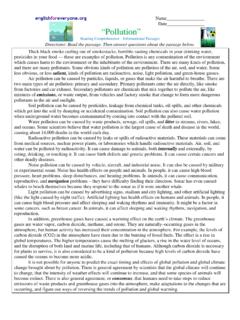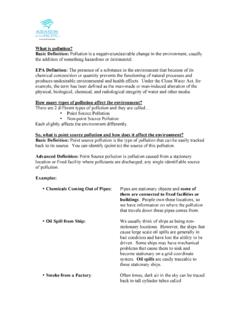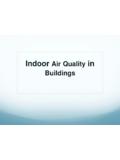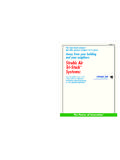Transcription of A Study of the Air Pollution Index Reporting System
1 Tender Ref. AP 07-085. A Study of the Air Pollution Index Reporting System FINAL REPORT. 27 June 2012. Submitted by Prof. Wong Tze Wai School of Public health and Primary Care The Chinese University of Hong Kong (on behalf of the Study team). Members of the Consultancy Team: The Chinese University of Hong Kong Prof. Wong Tze Wai (Principal Investigator and overall Project Manager). Dr. Wilson Tam Wai San (Model construction and statistical analyses). Prof. Yu Tak Sun, Ignatius (Epidemiological input and comments). Ms. Andromeda Wong Hin Shun (Editor). Hong Kong University of Science and Technology Prof. Alexis Lau Kai Hon (Literature review and comments). Mr. Simon KW Ng (Literature review). Mr. David Yeung (Computing). The University of Hong Kong Prof. Wong Chit Ming (Epidemiological input and comments).
2 Citation of authorship: Wong TW, Tam WWS, Lau AKH, Ng SKW, Yu ITS, Wong AHS, Yeung D. 1. CONTENTS Page 1 Background 3. 2 Objective 3. 3 Literature Review 3-9. Introduction 3-4. AQI/API Construction 4. Key Air Pollutants 4. Averaging Times 4-5. Calculation of AQI / API 5. Reporting of AQI / API 5-6. Comparing Different AQI / API Readings 6-7. Recent Developments 7-8. Air Quality health Index in Canada 7. Air Pollution Index System in South Africa 8. Common Air Quality Index of European Union 8-9. 4 Comparison of API values using different levels of AQOs 9-13. HK API based on WHO AQG 9. HK API based on WHO AQG-NS 9-10. HK API based on WHO AQG-F 10. Comparing the Level of Exceedance 10-13. 5 Modelling hospital admissions data using the Canadian approach 13-15. Rationale for the use of the Canadian model 13.
3 Statistical Modelling 13-15. Banding of the Excess Risk of Hospital Admissions Attributable to Air 15. Pollution 6 Results 16-23. Air pollutants and Emergency Hospital Admissions for 16-17. Cardio-Respiratory diseases Sensitivity Analysis 17. Excess Risks of Hospital Admissions Attributable to Air Pollution 17. Excess Risks of Hospital Admissions Attributable to Air Pollution 17-18. Among High-Risk Groups health risk categories and AQHI Bands 17-22. Interaction of air pollutants with cold season 23. Annual Air Quality Index 23. 7 Discussion 23-27. 8 Conclusion and Recommendation 27. 9 Acknowledgement 27. 10. References 28-29. 11. Appendices 30-48. Appendix 1: The problem of time lag for the API as an indicator of the current air 30-31. Pollution situation Appendix 2: Distribution of air pollutant concentrations by AQHI bands 32-33.
4 Appendix 3: Methodological issues in handling missing air pollutant data 34. Appendix 4: Plot of residuals against predicted hospital admissions in core model 35. Appendix 5: Plot of residuals against days 36. Appendix 6: Partial autocorrelation function by lag days 37. Appendix 7: Results from sensitivity analysis 38. Appendix 8: Viewpoints and discussions among team members on the Report 39-40. Appendix 9: Comments by health Canada on the Report 41-46. Appendix 10: Response to Environment Canada's Comments 47-50. 2. 1 Background The Air Pollution Index (API) Reporting System is an important tool of risk communication. It informs the public of the local level of ambient air Pollution , and the potential health risk it would impose, particularly on vulnerable groups such as children, the elderly, and those with existing cardiovascular and respiratory diseases.
5 People use the API to help them make decisions on outdoor activities; for example, schools and sports organizations may check the latest API figures to decide whether outdoor sporting events should be conducted on a certain day. The Hong Kong API has been devised in a similar way to API systems used in other developed countries, although there are variations in the calculation methods. In June 2007, the Environmental Protection Department (EPD) of the Hong Kong SAR Government commissioned an 18-month Study (Agreement No. CE 57/2006 (EP): Review of the Air Quality Objectives and Development of a Long Term Air Quality Strategy for Hong Kong Feasibility Study ), to review Hong Kong's existing Air Quality Objectives (AQO), first established in 1987; and, following the review, to develop a long-term air quality strategy to achieve the updated objectives.
6 This is in response to the Air Quality Guidelines (AQG), published by the World health Organization (WHO) in October 2005 for worldwide adoption. As the calculation of the Hong Kong API is based on the 1987 AQO currently being reviewed, it is an opportune time to devise an improved API System that serves as an effective tool of risk communication to the general public. 2 Study Objective To develop an API Reporting System for use in Hong Kong, with full justifications and implementation details. 3 Literature Review We have conducted a literature review of the API Reporting systems in various countries, as stipulated in the Tender of this Study . Introduction We reviewed the major air quality Index (AQI) or air Pollution Index (API) systems around the world, including the United States (US), the United Kingdom (UK), Canada, Australia, China, France, Singapore, South Korea, Taiwan, South Africa, Macau, and Hong Kong (Ove Arup, 2007, 1 and 2; websites 1-14).
7 While there are variations among the AQI / API systems developed by different countries or jurisdictions, all of the systems are designed to report the state of the air quality in a specific area or region, and to communicate its associated health risk. AQI / API systems are, in principle, designed to communicate the short-term health impact of local air quality to members of the public (Stieb et al, 2005), although in the US System , references are also made to long-term health risks. health advisories are issued when the air Pollution level is high, so that the general population, including susceptible groups, may take the necessary short- 3. term precautions. AQI / API Construction In essence, an AQI or API is constructed to express the levels of one or more air pollutants, over various critical averaging periods, against a reference.
8 The national air quality standards will usually be used as the reference for the Index . A network of air quality monitoring stations will be set up to measure ambient concentrations of common pollutants at fixed intervals. Some monitoring stations are located at the roadside to measure street-level concentrations. In places like Hong Kong and Paris, a roadside or traffic Index is reported separately from the general AQI / API. (websites 3, 6). Key Air Pollutants There are variations with respect to the selection of key air pollutants, as individual countries or jurisdictions will seek to include pollutants that pose the most significant impact on their residents (Elshout & L ger, 2006). Air pollutants commonly used in AQI / API include nitrogen dioxide (NO2), sulphur dioxide (SO2), ozone (O3), carbon monoxide (CO), respirable suspended particulate matter (PM10), and lead.
9 Fine suspended particulate matter ( ) is chosen in a few places, while in some Australian states, visibility is also incorporated into the AQI / API calculation (website 4). Conversely, pollutants that appear insignificant in a particular country may be omitted from the national AQI / API. model. For example, Canada's Air Quality health Index (AQHI) does not consider the concentrations of SO2 and CO. (Website 2). China's API excludes O3 from its calculations (website 10). Averaging Times Another important aspect in constructing an AQI / API is the choice of the averaging time(s) for each pollutant. As the primary objective of an AQI / API System is to communicate the health risk related to short-term exposure to air pollutants, it would therefore be natural for the System to track pollutant concentrations over a shorter averaging time.
10 Based on experience around the world, calculation of the AQI / API is usually based on 1-hour, 8-hour, or 24-hour average monitoring data, depending on the pollutants (Ove Arup, 2007, 1 & 2). It is worth noting that while the concentrations of most air pollutants are measured by a shorter averaging time (like the 1-hour average) for AQI / API. calculations, particulate matter (PM) is averaged over a 24-hour period. This is due to the lack of scientific evidence with respect to the exposure-response relationship for PM over a one-hour period (Cairncross et al, 2007). As a result, when PM is the dominant pollutant, the AQI / API System is not responsive enough to reflect a sudden surge in the level of PM, because the Index is based on its concentrations averaged over the past 24 hours. There is inevitably a time lag between the rise in concentration recorded at the monitoring stations and the rise in AQI / API readings; this time lag will delay the issuance of health advisories for impending air Pollution episodes.




